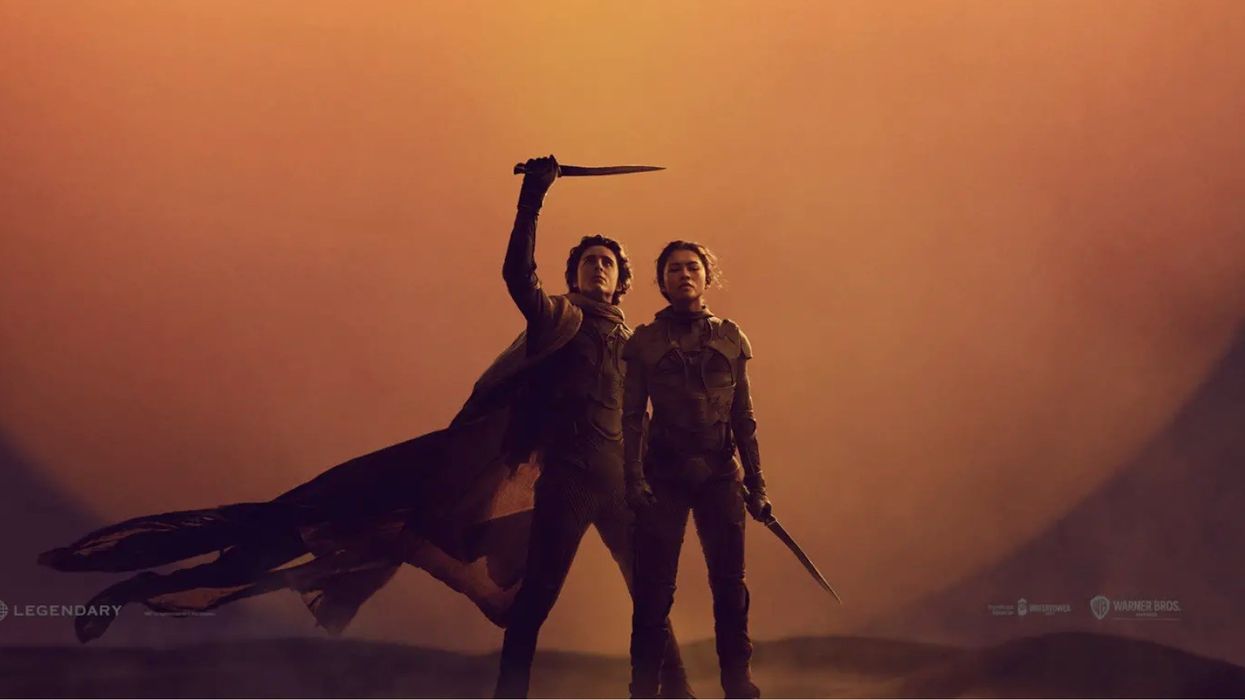Check Out the Camera and Lenses Greig Fraser Used for 'Dune: Part Two'
Greig Fraser shares insights into his cameras, lenses, and process for working with Denis Villeneuve to bring Dune: Part Two to life.

Camera used on Dune 2
Whenever the next big blockbuster comes out, there’s always a rush of people trying to find out what camera the film was shot on and how some of its more specifically jaw-dropping sequences were lensed. Dune: Part Two is no different, especially considering it's a behemoth of a beautiful film full of awe-inspiring cinematography and action sequences.
So, if it’s ever crossed your interest to find out what camera and lenses were used on this sci-fi epic, we have you covered. Thanks to a recent interview with ARRI Rental, director of photography Greig Fraser ACS, ASC has shared how he and director Denis Villeneuve brought Dune: Part Two to life.
What Cameras Were 'Dune: Part Two' Shot On?
In what should really be no surprise to anyone at this point, Dune: Part Two was shot on the ALEXA 65 and the ALEXA Mini LF. For those of you hoping to discover that Greig Fraser opted to use a more affordable camera like the Sony FX3 (as he did with director Gareth Edwards for The Creator), you might be a bit disappointed that this camera team left nothing to chance with this one.
“We started by asking ourselves some philosophical questions about whether part two needed to look the same as part one. Do we continue with the same format? Do we stay with digital, or do we go to film? Do we shoot 16 mm? It's a bigger world that we're building in part two; there are more planets, more set pieces, and more action. We decided to keep the fundamental through-line of large-sensor ALEXA cameras, but to combine ALEXA 65 with ALEXA Mini LF and shoot the whole thing spherical. That kept our options open for the IMAX version and we felt that 65 mm with the Mini LF was a good combo." — Greig Fraser talking with ARRI Rental.
A large part of the process for a film like this would come down to the formats and how Fraser and Villeneuve would decide to present the film when compared to the first one.

Dune 2 behind the scenes
Warner Bros
What Lenses Were Used for 'Dune: Part Two'?
From the same interview, Fraser gave a lot of interesting insights into how he and his team decided not just on their cameras and recording formats, but also what lenses to use to achieve the looks he and Villeneuve were going after.
"Texturizing the image was the name of the game. The larger ALEXA sensors are so extraordinary that I felt we needed to dirty the image up a bit." To help achieve this, ARRI Rental provided the cinematographer with additional lenses from its HEROES collection, designed to deliver extreme looks. We had a 57 mm LOOK lens with Petzval glass where you can dial in your effect with a third lens ring, and a 50 mm T.ONE lens. They were incredible, although we didn't end up using them as much as I'd intended because our focal lengths were more in the longer range, but I'm hoping to incorporate them on another movie, especially if ARRI Rental makes more of them." — Greig Fraser talking with ARRI Rental.
Ultimately Fraser and his team decided to use spherical optics and he worked with a diverse range from ARRI Rental including re-housed 1980s Moviecams and re-housed Soviet-era glass provided by IronGlass, along with some lenses from his collection.
The Challenges of Shooting 65MM
What’s perhaps most interesting though are Fraser’s insights shared in the interview about shooting 65mm. To some, it might be challenging of course, but with the right crew (and budget behind you) it also sounds like it was very creatively liberating and open.
"What I love about 65 mm is that it removes restrictions for me, opening up so many more lens options. You can work with lenses originally designed for smaller formats, where you see parts of the glass that were never intended to be seen. For me, seeing and feeling those hidden parts is an eye-opener, literally and figuratively. It helps me dirty up the image and give it texture in ways you couldn't do with a smaller format." — Greig Fraser talking with ARRI Rental.
Overall Dune: Part Two is a modern marvel. It’s what we’ve come to expect too from two of the greatest directors and cinematographers currently in the business as Fraser has more than established himself as the heir-apparent to the likes of Deakins, while Villeneuve is becoming about as reliable as an A-list director could possibly be.
- Watch: How Minimalistic Cinematography Brought 'The Godfather Part II' to Life ›
- What Are the 'Camera Specs' of the Human Eye? ›
- Is the Universe of 'Dune' Expanding Beyond 'Dune: Part Two'? ›
- Take a Look at the Avid Timeline From Dune: Part 2 ›
- What is a "Two Shot" In Film and TV? | No Film School ›











